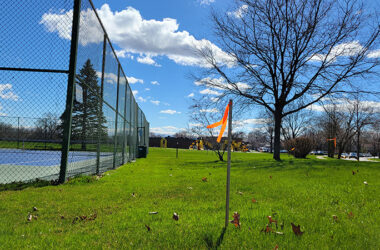A grandfather takes his grandchildren to the National Museum of African American History and Culture, connecting a broader history to the many personal stories he told them as they grew up.
The commentary below represents the ideas, observations and opinions of the author.
History has a fickle memory, very often intentionally so. Alternative facts are not a new phenomenon; they are the foundation upon which black history has been told in schools and communities across the country since before I was a young boy growing up in the segregated south of St. Joseph, Mo.
There has been a systematic and historical failure to acknowledge that black history is everybody’s history. That black lives matter. When I was in elementary school ― and high school, college and law school ― there were scant references, if any at all, to black history. And if there was, it spoke to black folks fitting into history; it certainly was not about America’s history told through the black experience.
Growing up, there was no space for a black man’s presence.
And perhaps, that’s why my grandchildren, Jade (a freshman at Michigan State University) and Jackson (a seventh grader at James Hart School), can recite verbatim the personal experiences I’ve shared with them. From the sit-ins and protests in the 1940s and 1950s to the blatant housing discrimination and barrage of death threats from the Ku Klux Klan in the 1970s. From the first time my eldest daughter was called the N-word in the 1960s while walking to kindergarten to when my youngest, driving with my grandchildren, was called that name and spat at in the 2000s, to the countless times in between.
I’ve shared these truths and so many more with them from even before they could comprehend. Along with the books “Goodnight Moon,” “Tar Beach” and “I Love My Hair,” my memories became their bedtime stories. They became my grandchildren’s supplemental education. In the tradition of black oral storytelling, the memories and knowledge shared about the black experience helped make them self aware, gave space to their presence in this world, let them know that their history is American history, and began to prepare them for the social injustices they would eventually face. I like to think that those stories woke them up before #staywoke became part of our collective social conscious.
One of the most important things we can all do as Americans ― regardless of race, creed or color ― is to explore our history. So when the Smithsonian National Museum of African American History and Culture opened last year, I knew immediately with whom I wanted to first step foot in the museum. My grandchildren and I recently took that journey together, along with my college roommate. It was an emotional journey, and quite frankly one that I am still processing.
To stand before a Ku Klux Klan robe was to once again face the feeling I had when they tried to drive us from our home in Kansas City.
To see the wrought iron ankle shackles used to restrain human beings on slave ships crossing the Atlantic and be inches away from a whip that was used on slaves was unfathomably heart-wrenching. I was touched most by the exhibit “Defending Freedom, Defining Freedom: The Era of Segregation 1876-1968,” which includes a tribute to the life and death of Emmett Till.
In 1955, the year Till was killed, I was a 22-year-old lieutenant in the United States Army, stationed in Germany. I remember vividly when I learned about his murder and as I looked at that casket, tucked away in a corner room of the museum with church hymns playing over a speaker and videos of his mother telling his story, I cried. I was overwhelmed with emotion for a life stolen and lives stolen before and since ― and our country’s ongoing quest to defend and define freedom.
As much as I would like it to be so, we all aren’t able to make the journey to the museum. And, if we are honest, we all don’t have the predilection to do so. We all do, however, have the moral obligation ― from the home to the classroom to the office to Capitol Hill – to lift our voices in acknowledgement and respect of America’s true history ― one that is told through all our experiences.
Paul Thornton is a resident of Hazel Crest and a member of the Board of Fire & Police Commissioners for the Village of Hazel Crest.


